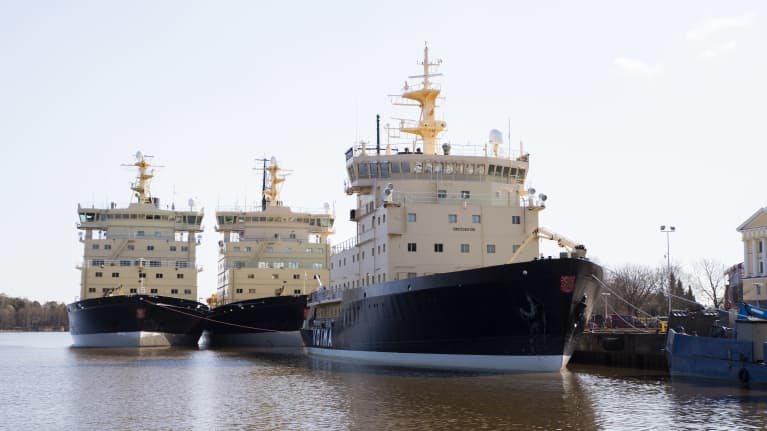Turkey's roadblock to Finland and Sweden's Nato membership has been in the news all week. Diplomats from the two Nordic nations are expected to meet with a Turkish delegation in Ankara to further discuss Turkey's concerns and demands on Wednesday.
However, Turkey may not be the sole obstacle for Finland and Sweden joining Nato, according to Uusi Suomi.
The publication spoke with two diplomats, Hannu Himanen, the former Finnish Ambassador to Russia, and Jaakko Iloniemi, the former Finnish Ambassador to the United States.
Both diplomats spelled out the Turkey situation in detail, explaining issues that have arisen over Finland and Sweden regarding Kurdish militants and Turkish demands for United States aircraft. The ambassadors said it is likely that issues with Turkey will be resolved by Nato's Madrid summit in late June.
The ambassadors also pointed out there is the possibility that issues could arise with the United States Congress as midterm elections approach. While the war in Ukraine has brought foreign policy to the forefront of US politics, that could change quickly to a more domestic focus.
"There's a danger that if [the Senate vote on Finland and Sweden's Nato membership] doesn't come before August and drifts into the autumn, that the Senate's agenda will be too clogged prior to the midterm election—more attractive things that are more relevant to the election. If it goes over the midterms, then we are in a difficult situation," the former US ambassador Himanen told Uusi Suomi.
Air based protein?
Swedish-language daily Hufvudsbladet ran a piece covering a Finnish start-up that says it can make a protein-rich food using only carbon dioxide, hydrogen, and a microbe, claiming it is "protein from air."
Solar Foods has claimed its innovation will separate food production from agriculture and means that food can be produced in the most remote environments— the desert, the Arctic and even in space.
Using bioreactors, the microbe grows and divides, forming a cloudy mass. This is then dried into a powder that has a protein content of 65 percent with the rest being carbohydrates, fats, and minerals.
After receiving a total investment of 35 million euros, Solar Foods also announced on Tuesday that it was granted a 15 million euros loan from Danske Bank Growth. Solar Foods has planned to construct a factory in Vantaa and this is the final piece of the puzzle, the company's CEO and co-founder Pasi Vainikka told HBL.
The firm is planning to take its product to market within the next two years, and is still awaiting EU approval which it applied for in October 2021.
Icebreaker replacements
Business daily Kauppalehti reported that a group of 20 representatives from businesses, organisations and institutions from Finland and Sweden gathered at the Finnish Ambassador's residence in Stockholm on Tuesday to discuss new ice breakers.
The topic was also on the agenda during Finnish President Sauli Niinistö's state visit to Sweden, but was overshadowed by the countries' joint Nato announcement.
The consortium of business interests hoped that the Finnish and Swedish governments would make a quick decision to acquire five new icebreakers. Most of such vessels in Finland's fleet are roughly 50 years old and their technology is outdated and no longer meet the demands of the modern world.
In efforts to reduce emissions, increasing numbers of large cargo ships with lower relative thrust are entering ports in the Gulf of Bothnia. These ships require a 32-metre wide, ice-free fairway, while current icebreakers have a beam of only 26 metres.
The Nextgen Icebreakers group has been pushing forward with this project for the past two years. Finnish companies including Wärtsilä, Rauma Marine Construction, and ABB Finland are all part of this group lobbying the Finnish and Swedish governments.
Plans have been submitted and KL wrote that the final step ahead of putting the project into motion will be approval by the Finnish and Swedish governments.
The purchasing model presented by the Nextgen Icebreaker group suggests that Sweden purchases three new icebreakers and Finland two, with a possible ship for Estonia as well.
There is also the question of the US renewing its icebreaker fleet, which according to the paper is long due for an overhaul. However, that decision is more political as certain exceptions need to be made as state ships are required by law to be built in the US. Former US President Donald Trump had authorised the Coast Guard to enter into an agreement with Finland, but the project was shelved after he left office.
Rising cost of electricity hits drivers
The rising cost of petrol has hurt many drivers and Helsingin Sanomat wrote that high electricity prices may also hurt the pockets of even more drivers.
HS stated that the high cost of electricity will significantly increase the cost of living and will increase expenses for many households.
Since 2018, electricity prices in Finland have risen considerably, from under 4 cents per kilowatt hour to 20 cents per kilowatt hour in 2022.
Prices for public charging this year are consistent around Finland — 20 cents per kilowatt hour for basic charging and up to 30 cents per kilowatt hour for fast charging.
Using an average consumption of 20 kilowatt hours per every 100 km for a medium-sized electric car and an annual average mileage of 18,000 km, an electric car would consume roughly 3,600 kilowatt hours of electricity per year.
With the lowest public price of 20 cents per kilowatt hour, the annual cost of driving an electric car 18,000 km per year would be 720 euros.
Compared to petrol automobiles, the average price has been 2.10 euros per litre and for someone driving 18,000 kilometres per year, they would spend roughly 1,962 euros per year on driving.
HS spelled out that driving an electric car is still cheaper than petrol in terms of mileage, but as electricity prices rise, the gap between the two may close.
